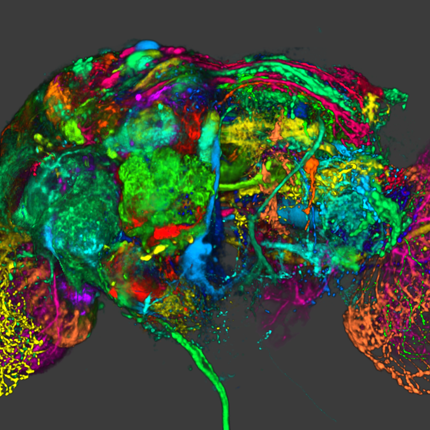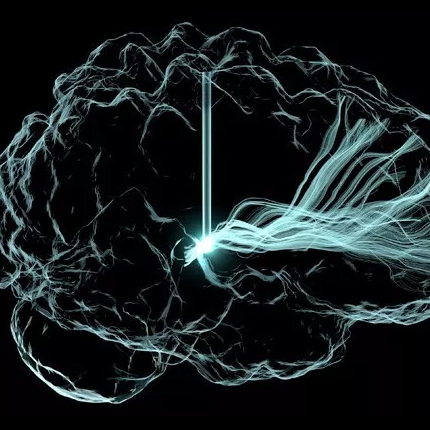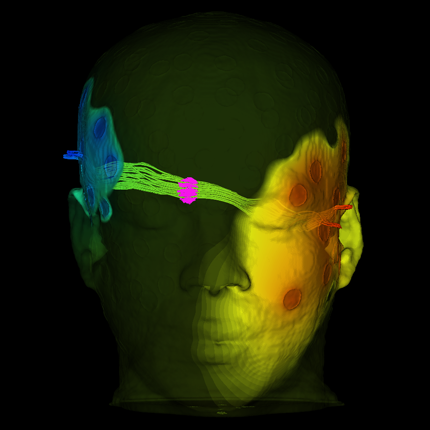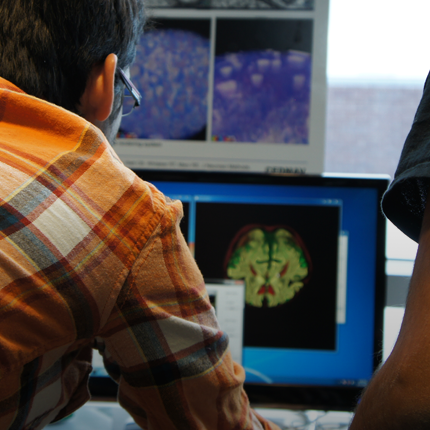Scientific Computing
Numerical simulation of real-world phenomena provides fertile ground for building interdisciplinary relationships. The SCI Institute has a long tradition of building these relationships in a win-win fashion – a win for the theoretical and algorithmic development of numerical modeling and simulation techniques and a win for the discipline-specific science of interest. High-order and adaptive methods, uncertainty quantification, complexity analysis, and parallelization are just some of the topics being investigated by SCI faculty. These areas of computing are being applied to a wide variety of engineering applications ranging from fluid mechanics and solid mechanics to bioelectricity.
Valerio Pascucci
Scientific Data Management
Chris Johnson
Problem Solving Environments
Ross Whitaker
GPUs
Chuck Hansen
GPUsFunded Research Projects:
Publications in Scientific Computing:
  TEMA: Event Driven Serverless Workflows Platform for Natural Disaster Management C. Sicari, A. Catalfamo, L. Carnevale, A. Galletta, D. Balouek-Thomert, M. Parashar, M. Villari. In 2023 IEEE Symposium on Computers and Communications (ISCC), pp. 1-6. 2023. DOI: 10.1109/ISCC58397.2023.10217920 TEMA project is a Horizon Europe funded project that aims at addressing Natural Disaster Management by the use of sophisticated Cloud-Edge Continuum infrastructures by means of data analysis algorithms wrapped in Serverless functions deployed on a distributed infrastructure according to a Federated Learning scheduler that constantly monitors the infrastructure in search of the best way to satisfy required QoS constraints. In this paper, we discuss the advantages of Serverless workflow and how they can be used and monitored to natively trigger complex algorithm pipelines in the continuum, dynamically placing and relocating them taking into account incoming IoT data, QoS constraints, and the current status of the continuum infrastructure. Therefore we presented the Urgent Function Enabler (UFE) platform, a fully distributed architecture able to define, spread, and manage FaaS functions, using local IOT data managed using the Fiware ecosystem and a computing infrastructure composed of mobile and stable nodes. |
 Optimizing Data Movement for GPU-Based In-Situ Workflow Using GPUDirect RDMA, B. Zhang, P.E. Davis, N. Morales, Z. Zhang, K. Teranishi, M. Parashar. In Euro-Par 2023: Parallel Processing, Springer Nature Switzerland, pp. 323--338. 2023. ISBN: 978-3-031-39698-4 DOI: 10.1007/978-3-031-39698-4_22 The extreme-scale computing landscape is increasingly dominated by GPU-accelerated systems. At the same time, in-situ workflows that employ memory-to-memory inter-application data exchanges have emerged as an effective approach for leveraging these extreme-scale systems. In the case of GPUs, GPUDirect RDMA enables third-party devices, such as network interface cards, to access GPU memory directly and has been adopted for intra-application communications across GPUs. In this paper, we present an interoperable framework for GPU-based in-situ workflows that optimizes data movement using GPUDirect RDMA. Specifically, we analyze the characteristics of the possible data movement pathways between GPUs from an in-situ workflow perspective, and design a strategy that maximizes throughput. Furthermore, we implement this approach as an extension of the DataSpaces data staging service, and experimentally evaluate its performance and scalability on a current leadership GPU cluster. The performance results show that the proposed design reduces data-movement time by up to 53% and 40% for the sender and receiver, respectively, and maintains excellent scalability for up to 256 GPUs. |
  Studying Latency and Throughput Constraints for Geo-Distributed Data in the National Science Data Fabric J. Luettgau, H. Martinez, G. Tarcea, G. Scorzelli, V. Pascucci, M. Taufer. In Proceedings of the 32nd International Symposium on High-Performance Parallel and Distributed Computing, ACM, pp. 325–326. 2023. DOI: 10.1145/3588195.3595948 The National Science Data Fabric (NSDF) is our solution to the problem of addressing the data-sharing needs of the growing data science community. NSDF is designed to make sharing data across geographically distributed sites easier for users who lack technical expertise and infrastructure. By developing an easy-to-install software stack, we promote the FAIR data-sharing principles in NSDF while leveraging existing high-speed data transfer infrastructures such as Globus and XRootD. This work shows how we leverage latency and throughput information between geo-distributed NSDF sites with NSDF entry points to optimize the automatic coordination of data placement and transfer across the data fabric, which can further improve the efficiency of data sharing. |
 Development of Large-Scale Scientific Cyberinfrastructure and the Growing Opportunity to Democratize Access to Platforms and Data, J. Luettgau, G. Scorzelli, V. Pascucci, M. Taufer. In Distributed, Ambient and Pervasive Interactions, Springer Nature Switzerland, pp. 378--389. 2023. ISBN: 978-3-031-34668-2 DOI: 10.1007/978-3-031-34668-2_25 As researchers across scientific domains rapidly adopt advanced scientific computing methodologies, access to advanced cyberinfrastructure (CI) becomes a critical requirement in scientific discovery. Lowering the entry barriers to CI is a crucial challenge in interdisciplinary sciences requiring frictionless software integration, data sharing from many distributed sites, and access to heterogeneous computing platforms. In this paper, we explore how the challenge is not merely a factor of availability and affordability of computing, network, and storage technologies but rather the result of insufficient interfaces with an increasingly heterogeneous mix of computing technologies and data sources. With more distributed computation and data, scientists, educators, and students must invest their time and effort in coordinating data access and movements, often penalizing their scientific research. Investments in the interfaces’ software stack are necessary to help scientists, educators, and students across domains take advantage of advanced computational methods. To this end, we propose developing a science data fabric as the standard scientific discovery interface that seamlessly manages data dependencies within scientific workflows and CI. |
  Error Estimation for the Material Point and Particle in Cell Methods, M. Berzins. In admos2023, 2023. The Material Point Method (MPM) is widely used for challenging applications in engineering, and animation. The complexity of the method makes error estimation challenging. Error analysis of a simple MPM method is undertaken and the global error is shown to be first order in space and time for a widely-used variant of the method. Computational experiments illustrate the estimated accuracy. |
 Orchestration of materials science workflows for heterogeneous resources at large scale, N. Zhou, G. Scorzelli, J. Luettgau, R.R. Kancharla, J. Kane, R. Wheeler, B. Croom, B. Newell, V. Pascucci, M. Taufer. In The International Journal of High Performance Computing Applications, Sage, 2023. In the era of big data, materials science workflows need to handle large-scale data distribution, storage, and computation. Any of these areas can become a performance bottleneck. We present a framework for analyzing internal material structures (e.g., cracks) to mitigate these bottlenecks. We demonstrate the effectiveness of our framework for a workflow performing synchrotron X-ray computed tomography reconstruction and segmentation of a silica-based structure. Our framework provides a cloud-based, cutting-edge solution to challenges such as growing intermediate and output data and heavy resource demands during image reconstruction and segmentation. Specifically, our framework efficiently manages data storage, scaling up compute resources on the cloud. The multi-layer software structure of our framework includes three layers. A top layer uses Jupyter notebooks and serves as the user interface. A middle layer uses Ansible for resource deployment and managing the execution environment. A low layer is dedicated to resource management and provides resource management and job scheduling on heterogeneous nodes (i.e., GPU and CPU). At the core of this layer, Kubernetes supports resource management, and Dask enables large-scale job scheduling for heterogeneous resources. The broader impact of our work is four-fold: through our framework, we hide the complexity of the cloud’s software stack to the user who otherwise is required to have expertise in cloud technologies; we manage job scheduling efficiently and in a scalable manner; we enable resource elasticity and workflow orchestration at a large scale; and we facilitate moving the study of nonporous structures, which has wide applications in engineering and scientific fields, to the cloud. While we demonstrate the capability of our framework for a specific materials science application, it can be adapted for other applications and domains because of its modular, multi-layer architecture. |
  The effects of passive design on indoor thermal comfort and energy savings for residential buildings in hot climates: A systematic review M. Hu, K. Zhang, Q. Nguyen, T. Tasdizen. In Urban Climate, Vol. 49, pp. 101466. 2023. DOI: https://doi.org/10.1016/j.uclim.2023.101466 In this study, a systematic review and meta-analysis were conducted to identify, categorize, and investigate the effectiveness of passive cooling strategies (PCSs) for residential buildings. Forty-two studies published between 2000 and 2021 were reviewed; they examined the effects of PCSs on indoor temperature decrease, cooling load reduction, energy savings, and thermal comfort hour extension. In total, 30 passive strategies were identified and classified into three categories: design approach, building envelope, and passive cooling system. The review found that using various passive strategies can achieve, on average, (i) an indoor temperature decrease of 2.2 °C, (ii) a cooling load reduction of 31%, (iii) energy savings of 29%, and (v) a thermal comfort hour extension of 23%. Moreover, the five most effective passive strategies were identified as well as the differences between hot and dry climates and hot and humid climates. |
  A Metalearning Approach for Physics-Informed Neural Networks (PINNs): Application to Parameterized PDEs M. Penwarden, S. Zhe, A. Narayan, R.M. Kirby. In Journal of Computational Physics, Elsevier, 2023. DOI: https://doi.org/10.1016/j.jcp.2023.111912 Physics-informed neural networks (PINNs) as a means of discretizing partial differential equations (PDEs) are garnering much attention in the Computational Science and Engineering (CS&E) world. At least two challenges exist for PINNs at present: an understanding of accuracy and convergence characteristics with respect to tunable parameters and identification of optimization strategies that make PINNs as efficient as other computational science tools. The cost of PINNs training remains a major challenge of Physics-informed Machine Learning (PiML) – and, in fact, machine learning (ML) in general. This paper is meant to move towards addressing the latter through the study of PINNs on new tasks, for which parameterized PDEs provides a good testbed application as tasks can be easily defined in this context. Following the ML world, we introduce metalearning of PINNs with application to parameterized PDEs. By introducing metalearning and transfer learning concepts, we can greatly accelerate the PINNs optimization process. We present a survey of model-agnostic metalearning, and then discuss our model-aware metalearning applied to PINNs as well as implementation considerations and algorithmic complexity. We then test our approach on various canonical forward parameterized PDEs that have been presented in the emerging PINNs literature. |
  Multi-Task Classification for Improved Health Outcome Prediction Based on Environmental Indicators M. Alirezaei, Q.C. Nguyen, R. Whitaker, T. Tasdizen. In IEEE Access, 2022. DOI: 10.1109/ACCESS.2023.3295777 The influence of the neighborhood environment on health outcomes has been widely recognized in various studies. Google street view (GSV) images offer a unique and valuable tool for evaluating neighborhood environments on a large scale. By annotating the images with labels indicating the presence or absence of certain neighborhood features, we can develop classifiers that can automatically analyze and evaluate the environment. However, labeling GSV images on a large scale is a time-consuming and labor-intensive task. Considering these challenges, we propose using a multi-task classifier to improve training a classifier with limited supervised, GSV data. Our multi-task classifier utilizes readily available, inexpensive online images collected from Flicker as a related classification task. The hypothesis is that a classifier trained on multiple related tasks is less likely to overfit to small amounts of training data and generalizes better to unseen data. We leverage the power of multiple related tasks to improve the classifier’s overall performance and generalization capability. Here we show that, with the proposed learning paradigm, predicted labels for GSV test images are more accurate. Across different environment indicators, the accuracy, F1 score and balanced accuracy increase up to 6 % in the multi-task learning framework compared to its single-task learning counterpart. The enhanced accuracy of the predicted labels obtained through the multi-task classifier contributes to a more reliable and precise regression analysis determining the correlation between predicted built environment indicators and health outcomes. The R2 values calculated for different health outcomes improve by up to 4 % using multi-task learning detected indicators. |







